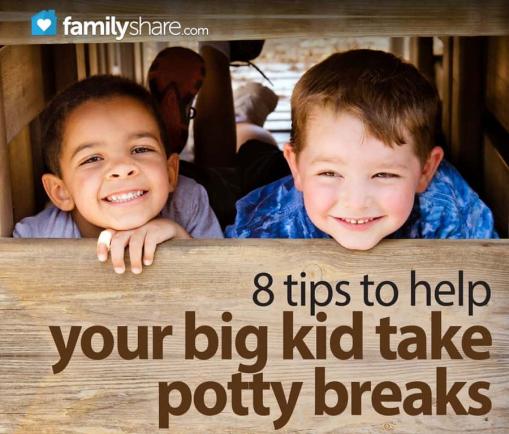
I still remember the embarrassment I felt the day I peed my pants in front of my friends. I was a "big kid" and my potty training days were two years in the past. We were in the middle of playing a made up game with our silly dog. I put off going to the bathroom too long because I was having so much fun. Laughter was the trigger that unleashed a flood to my horror and to the pointing and giggles of my siblings and friends. In all my 4-year-old girliness, it never occurred to me that skirts provided no disguise to a loss of bladder control.
Good news!
Eventually, I figured out how to control my bladder. The good news is that most kids figure it out, too. Some kids just take longer than others. According to the National Kidney and Urologic Diseases Information Clearing House (NKUDIC), kids with bladder control issues may have inherited a genetic predisposition for nighttime wetting from their parents. But what happens when you already finished toilet training, yet now your child is having accidents during the day? You thought your potty training days were over. So what went wrong?
The NKUDIC lists 4 main causes of daytime accidents:
-
Urinary Tract Infections (UTI)
-
Structural Abnormalities
-
Overactive bladder
-
Not going to the bathroom often enough, or not emptying the bladder completely.
If you are concerned that your child may have a UTI or structural abnormalities, consult with your child's doctor to rule these out. However, it is important to note that overactive bladder and infrequent bathroom breaks are the most likely causes of daytime incontinence.
Whether a child is too busy having fun, or too distracted to notice the body's signals, accidents happen from time to time. For some kids, it can be a frustrating regular occurrence. Children who have accidents at an older age may need extra help from parents and caregivers. If your older child continues to have issues, remember the following 8 helpful tips to encourage potty breaks:
1. Minimize stress and anxiety
Try not to get upset and shame children who have accidents. You can bet it's embarrassing, even if your child tries not to show it. You don't want extra guilt, shame and anxiety complicating the issue.
2. Ensure a well-balanced diet
Constipation can contribute to accidents, so maintaining a healthy bowel routine can help. Make sure your child gets plenty of fiber and water. Also, limit caffeine since this tends to increase the need to urinate.
3. Establish a routine
Make sure you have required times to use the bathroom. As a parent, help reinforce these set times as a way for your child to take good care of their body. A standard routine would include a bathroom visit first thing in the morning, before and after school and before bedtime. Work with your child to set other times such as recess and lunchtime. Know you may need to provide individualized prompts in order for your child to be successful at following this routine. Other ways to help include:
-
Set a timer. Use your oven, cell phone, or egg timer.
-
Purchase a watch that can accompany your child to school with multiple alarms (preferably waterproof). Set the alarms to coordinate with recess or break time.
-
Speak to your child's teacher about not penalizing your child for extra bathroom visits. You may need a doctor's note to enlist the school's help.
4. Use a reward system
Most parents use a reward system when toilet training toddlers. It may be time to bring it back. Find a system that works for your family to provide positive motivation for your big kids to stay dry. Sticker charts, new books, and electronics privileges work well in my home.
5. Public restroom pointers
Whether it's the unexpected noise of automatic toilets, the fear of germs and contamination, or a multitude of other reasons, fear of public restrooms may deter some children from using the toilet when they most need to. If your child struggles with this fear, take some field trips to public toilets to help set fears to rest.
6. Explain how automatic toilets work
Point out the sensors and the flush button. Have your child try it out. If the sound is too loud or scary, consider covering the sensor with a cloth to prevent unintentional flushes and scares.
7. Teach the truth about germs
Many people are afraid of germs in public restrooms. Make sure you are fully informed of how unlikely it is for you or your child to contract a serious illness by using a public restroom. You may want to check out Web MD for a great article entitled "What Can You Catch in Restrooms," which dispels some common public bathroom myths.
8. Be patient
Becoming accident-free all day every day is a matter of growth - of the bladder, the brain and coordination between the two. The Dayton Children's Hospital states that when helping older children achieve consistent bladder control, "progress generally occurs slowly, a little at a time." While you are helping your child achieve better bladder control, be sure to show that you have confidence in a successful outcome.

